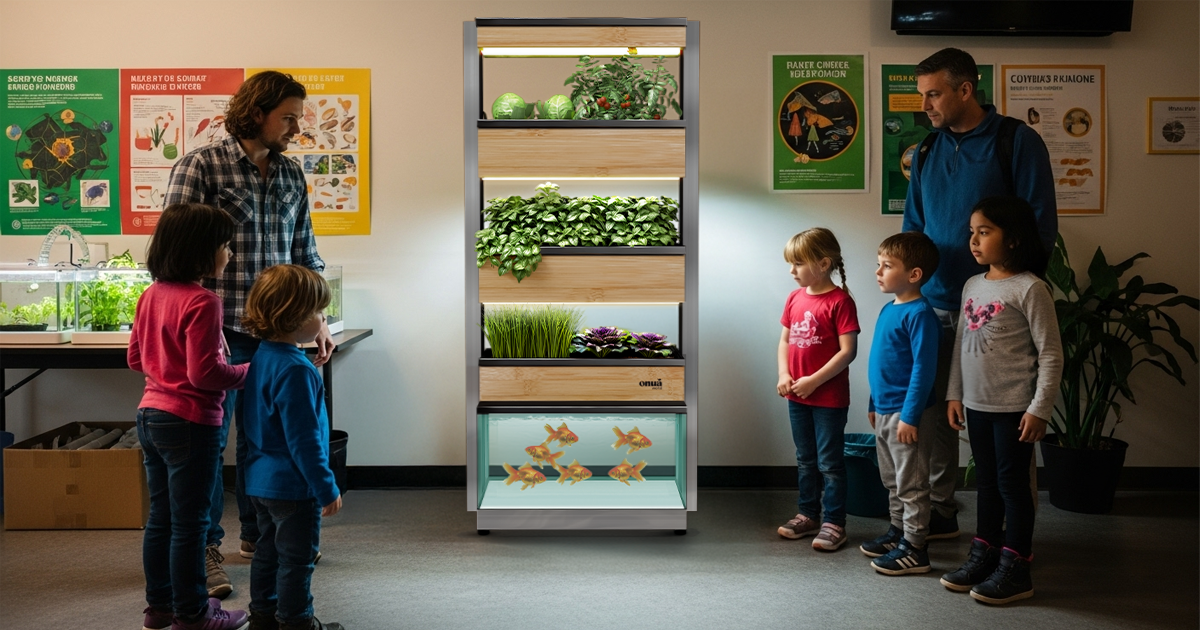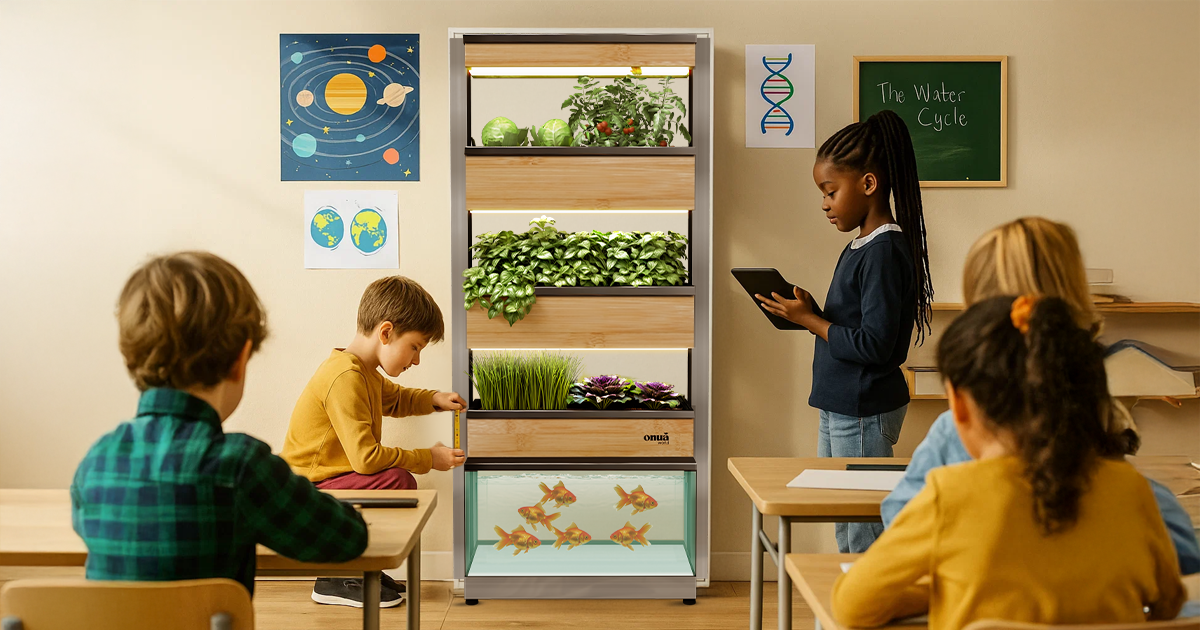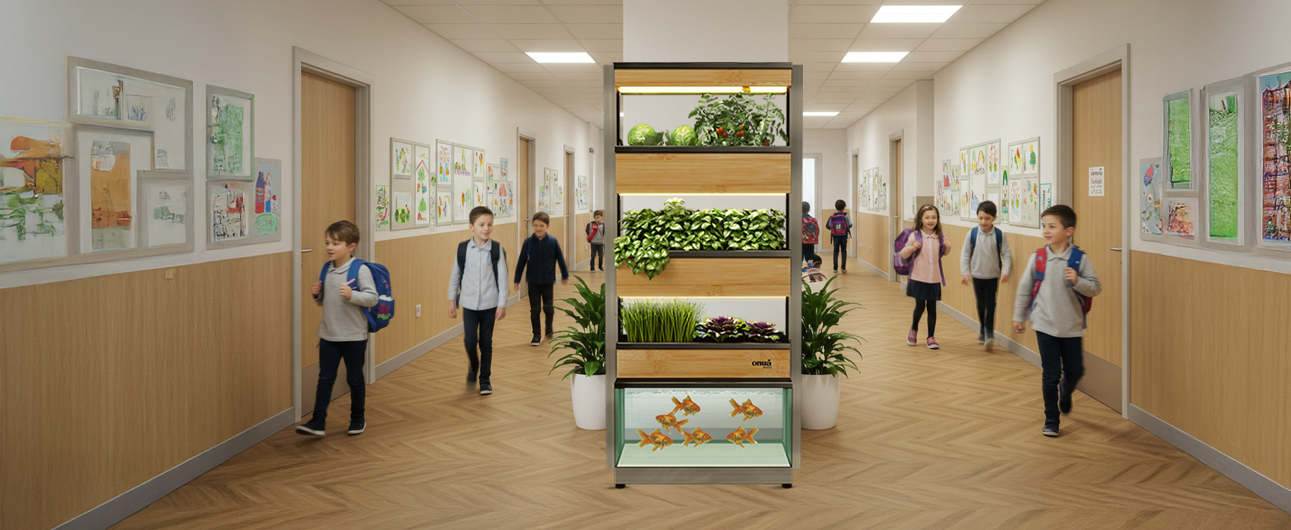Introduction In a world where sustainability and innovation are no longer optional but essential, schools and universities are finding new ways to integrate eco-conscious practices into the heart of learning. One powerful and practical solution is the Onuà Smart Aquaponics Garden — a hands-on, visually engaging system that brings science, sustainability, and technology to life within the classroom.
With climate change education becoming increasingly urgent, aquaponics provides a tangible and inspiring way to connect students with real-world environmental action. It transforms classrooms into green spaces that teach, inspire, and grow alongside their students.
Why Aquaponics Belongs in the Classroom Aquaponics combines aquaculture (raising fish) with hydroponics (growing plants in water) in a self-sustaining ecosystem. When introduced into schools, it becomes more than just a growing system; it becomes a living lab where students explore biology, environmental science, and real-world applications of sustainability.
Students not only witness the water cycle, nutrient flow, and ecosystem balance — they become caretakers of an indoor farm that uses 90% less water than traditional soil gardening. This active participation helps build responsibility, curiosity, and environmental awareness.
Aquaponics aligns with schools’ efforts to meet climate and sustainability goals, making it a relevant teaching tool for educators looking to promote climate literacy and future-ready skills.
Benefits for STEM and Cross-Curricular Learning From primary classrooms to university labs, Onuà Gardens support a wide array of educational outcomes:
🔬 Science: Observe ecosystems, plant biology, nitrogen cycles, and water chemistry firsthand — all while collecting live data.
📈 Math: Apply real-world measurements and calculations like tracking plant growth, analyzing water temperatures, and monitoring pH balance.
🔧 Technology: Use Onuà’s smart app to check system stats such as water level and temperature from a tablet or mobile phone — bridging hands-on learning with edtech.
📚 Language: Have students write journals, lab reports, persuasive essays, or blog entries about their experience managing a self-sustaining ecosystem.
🌍 Civics & Ethics: Facilitate discussions about food security, climate change, water use, and how individuals can be part of the solution.
This cross-disciplinary tool naturally invites collaboration among teachers across different departments — making learning more integrated and relevant.
A Tool for Eco-Leadership and Green Certification Schools that implement Onuà Gardens showcase their commitment to sustainability and environmental stewardship. These visible green efforts:
· Support certifications like LEED, EcoSchools, BREEAM, HQE and WELL,
· Promote climate literacy, resilience, and systems thinking
· Inspire parents and community members who value environmentally responsible education
· Contribute to the UN Sustainable Development Goals (SDGs), especially goals 2 (Zero Hunger), 4 (Quality Education), and 13 (Climate Action)
Administrators and school boards can use the garden to enhance their sustainability roadmap while creating measurable, reportable impact.
From Seed to Plate: Nutrition Meets Education With Onuà World, schools can take learning beyond the lab and into the kitchen. Students can harvest leafy greens or herbs and use them in school meals, culinary classes, or food science projects.
This cycle teaches:
· The importance of fresh, local food
· Healthy eating habits
· How growing your own food promotes self-sufficiency and well-being
Schools can also host community events or harvest days to engage families and promote student-led initiatives like garden-to-table tastings.
Where to Place It: Versatile and Modular The garden's compact and modular design allows it to be installed almost anywhere:
· 🌿 Classrooms for STEM or life sciences
· 🧪 Labs for chemistry, biology, or technology experiments
· 🥗 Cafeterias for nutrition education or green displays
· 🚶♂️ Hallways or entryways as a visible sign of eco-leadership
Departments can co-manage the garden or rotate its use throughout the academic year — building school-wide participation and ownership.
Conclusion Onuà World Smart Aquaponics Gardens are not just educational tools — they are catalysts for growing a greener generation. They spark curiosity, promote scientific inquiry, and encourage young people to become stewards of their environment.
As climate challenges grow, so does the need for schools to lead by example. With Onuà, you don’t just teach sustainability — you grow it. 🌱
Start your school’s journey toward climate-conscious education today. Learn more: https://onuaworld.com/pages/schools-universities




